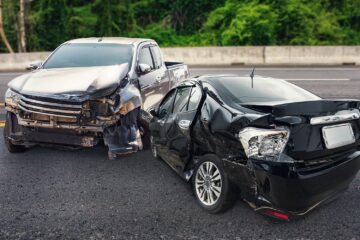Unexpected roadside troubles can happen to anyone, whether during a short commute or a long road trip. Having a few essentials and knowing what steps to take can make a huge difference when trouble strikes. Being ready saves time, limits stress, and prevents unnecessary expenses when assistance is needed. Many drivers underestimate how costly sudden roadside problems can be, especially when outside help becomes necessary. With the right knowledge and preparation, most emergencies can be managed calmly and safely.
Here’s how you can prepare, know when to seek help, and keep yourself and your passengers safe in unpredictable situations on the road:
Know Your Vehicle Inside and Out
Every driver should have a good grasp of their car’s basic workings. Understanding simple details like tire pressure, fluid levels, and warning signals helps spot problems before they grow worse. Take time to read the owner’s manual, check what each dashboard light means, and test your lights regularly. Get familiar with how your brakes and steering feel when everything functions correctly. That way, you’ll know instantly when something feels off. These small checks don’t take long, but they help prevent being stranded in the middle of nowhere. A little awareness can make all the difference in staying prepared and avoiding unnecessary stress later.
When Professional Help Becomes Necessary
Sometimes, the safest move is to call for help, especially if you’re stuck in an unsafe area or your car won’t move at all. Reliable towing companies make the process less stressful by offering transparent pricing and quick service. Factors like distance, time of day, and type of vehicle affect the costs to get a car towed. For example, towing a short distance may cost less, while longer trips or after-hours service can increase the price. Many towing providers also offer roadside assistance, flat tire changes, battery jump-starts, and lockout help. Choosing a trusted towing service means you’ll get timely support without worrying about inflated fees or hidden charges.
Must-Have Tools for Every Driver
Keeping a few essential tools in your trunk can save you from being stuck for hours. A jack, lug wrench, jumper cables, flashlight, and portable inflator are must-haves. Duct tape, gloves, and a multi-tool can also come in handy. A tire pressure gauge helps monitor your tires regularly, while a small first-aid kit adds an extra layer of safety. Store these tools neatly in a sturdy box or bag so you can access them quickly. You don’t have to be an expert to use them. A few minutes of practice and a little confidence go a long way when managing unexpected breakdowns or flat tires.
Creating a Reliable Emergency Kit
A well-prepared emergency kit can make a huge difference when waiting for help. Include bottled water, a flashlight, non-perishable snacks, a reflective vest, and basic first-aid supplies. Don’t forget a blanket or poncho for bad weather and a phone charger for emergencies. Add reflective warning triangles or LED flares to stay visible to other drivers. It’s smart to keep copies of insurance and contact details in a waterproof folder. Revisit your kit every few months to replace expired items or drained batteries. Being prepared doesn’t take much effort, but it helps you stay comfortable and calm during stressful roadside situations.
Staying Safe During a Breakdown
If your car breaks down, the first step is to get off the road safely. Move to the shoulder or as far from traffic as possible, then turn on your hazard lights. Use reflective gear or warning triangles to alert others. Stay inside the vehicle if traffic is heavy, and keep your seatbelt on while waiting. Avoid standing behind or near traffic lanes. If it’s safe, open your hood to signal that you need assistance. Keep your phone charged and your roadside assistance number ready. Prioritizing safety keeps you out of harm’s way while help is on the way.
Flat Tire? Here’s What to Do
A flat tire can happen anywhere, so knowing how to handle it helps reduce panic. Start by pulling over to a safe area with firm ground. Turn on your hazard lights and use a reflective triangle. Loosen the lug nuts slightly before lifting the car with a jack. Replace the damaged tire with a spare, then tighten the nuts gradually. If you don’t have the tools or feel unsafe, it’s better to call for help. Some situations, like sidewall damage, aren’t suitable for temporary fixes. Always get your tire inspected later to avoid further problems while driving.
Battery Problems and Quick Fixes
A dead battery often catches people off guard, but it’s easy to handle with the right tools. Keep jumper cables in your trunk and know how to connect them properly. Red to positive, black to negative, and start the working car first before trying yours. Let the engine run for a few minutes before removing the cables. If your battery frequently dies, it might be time for a replacement or check-up. Cold weather, long idle periods, or frequent short trips can shorten battery life. Testing it occasionally at an auto shop helps avoid being stranded again.
Handling Overheating or Engine Trouble
When the temperature gauge starts to rise, pull over immediately and switch off the ignition. Open the hood carefully once the heat subsides. Never remove the radiator cap while it’s hot. Letting the system cool completely is key to avoiding burns or added damage. Once safe, check if coolant levels are low. If they are, refill with the right fluid and call for help if overheating continues. Regular inspections and timely servicing help prevent most temperature-related troubles. If you’re far from help, wait for assistance rather than risking more harm by trying to drive again.
Preparedness makes driving less stressful and much safer. By understanding how to respond to breakdowns, having basic tools, and knowing when to seek help, you stay in control even during unexpected moments. A well-packed emergency kit, reliable contacts, and regular checks are small steps that make a big difference. Emergencies might be unpredictable, but your response doesn’t have to be. The more ready you are, the faster and safer you’ll get back on the road, with peace of mind and confidence on every journey.


